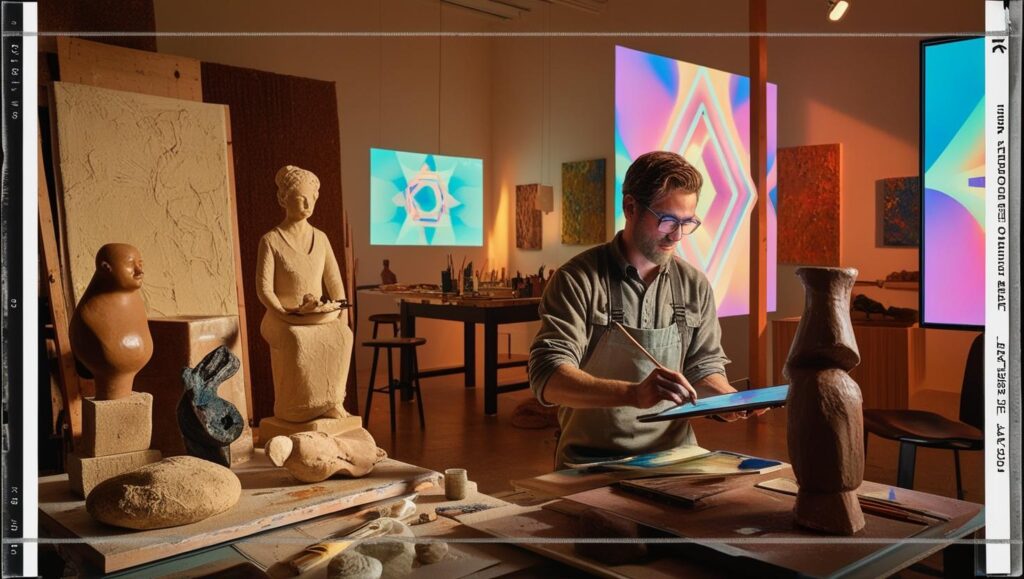Post-internet art embodies a historical rupture in twenty-first-century artistic practices, establishing itself through an intrinsic relationship with digital technologies. This cultural phenomenon manifests a critical positioning towards the omnipresence of the internet in contemporary society, articulating complex formulations regarding the intersection between materiality and virtuality. The dissolution of boundaries between digital and physical domains underpins this movement, proposing a radical reformulation of aesthetic and conceptual paradigms in contemporary art.
In conceptual terms, post-internet art distinguishes itself significantly from net art through its materialist and hybrid approach. While net art operates primarily within the digital domain, post-internet art is characterized by translating digital aesthetics into tangible objects, establishing a complex dialectic between the virtual and material. This materiality constitutes a synthesis acknowledging the impossibility of separating online and offline experiences in contemporary existence.
This movement’s artistic methodology manifests through specific appropriation and remediation strategies. Post-internet artists frequently employ practices of collection, processing, and recombination of digital images, creating works that reflect the fluidity of technologically mediated interactions. This appropriation extends to the structures and systems characterizing the digital environment.
Within the realm of institutional critique, post-internet art presents significant challenges to traditional art world structures. The integration of these artistic practices into conventional institutions raises fundamental questions regarding authorship, originality, and artistic value. The movement oscillates between utopian and dystopian perspectives on digital technology, problematizing relationships between digital capitalism, ecology, and contemporary social dynamics.
The educational dimension of post-internet art requires particular attention, considering its reconfiguration of traditional pedagogical practices. The movement promotes a decentralized, networked approach to art education, challenging fixed narratives and fostering new models of engagement with digital cultures. This pedagogical transformation evidences a profound understanding of cultural changes precipitated by internet ubiquity.
Regarding cultural identity, post-internet art contributes significantly to contemporary debates on identity politics and cultural expression. The movement explores themes such as virtual intimacy and digital queering, evidencing the fluidity of identities in a networked world. This exploration reflects comprehensive cultural change, wherein the internet integrates as a fundamental component of quotidian experience.
Critiques of the movement focus primarily on its potential co-optation by commercial and advertising forces, raising questions about artistic autonomy within a digital economy. As the distinction between digital and physical experiences becomes increasingly tenuous, the very concept of post-internet art as a distinct movement becomes subject to academic debate.
In conclusion, post-internet art represents a fundamental transformation in contemporary artistic practice, characterized by the complex integration of digital and physical elements. The movement reflects technological changes in contemporary society, contributing to the formation of new cultural and artistic paradigms. Its relevance expands throughout the artistic field, influencing education, cultural identity, and debates concerning technology and society.

